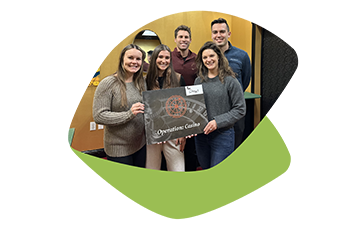Employee Wellness Programs: One Antidote to Our Loneliness Problem


A recent article in The Atlantic, “The Anti-Social Century” by Derek Thompson, has stuck with me since I read it. In it, Thompson argues that “Self-imposed solitude might just be the most important social fact of the 21st century in America.” His argument is backed up by compelling research from several social scientists. It’s gotten me thinking about how the work we do in improving employee health can also be seen as a solution to a uniquely modern problem affecting our friends and neighbors.
Social Isolation in the workplace
Social isolation is more than just a personal issue. It also can dramatically affect the workplace. Isolated employees experience heightened stress and anxiety, which can lead to reduced engagement and interfere with productivity and coworker collaboration. In our work at HealthSource Solutions, we see every day how this negatively affects workplace culture, team dynamics, and overall company performance. We’ve grown used to isolation as being just part of life.
Thompson argues, with strong evidence, that the problem of isolation has worsened over the last couple of decades, exacerbated by the global pandemic. In short, people are spending more time in their homes— alone — and it’s having a negative effect on our collective mental health.
I realize that there are no easy answers, but I firmly believe that employers should play a positive role in reducing the negative impacts of this growing problem. Indeed, as this paper from the McKinsey Health Institute notes: “For most adults, the majority of waking daily life is spent at work. That offers employers an opportunity to influence their employees’ physical, mental, emotional, social, and spiritual health.” We have made it our mission to facilitate this.
Our employee health programs provide structured opportunities for employees to engage with one another in meaningful ways, counteracting the loneliness that can accompany remote or isolated work environments — and even the general loneliness that Thompson outlines in his article
Intentional connections at work or away
It’s critical to implement intentional connection points. Simple initiatives like fitness challenges, Zoom chats, team walks, and team-building activities like a charity event or visit to an escape room are excellent and easy examples. These connections bring employees together around shared goals, creating a sense of community and mutual support, something they might be lacking both in and outside of working hours.
For instance, partner-based wellness initiatives — like a buddy program or pickleball outing — encourage camaraderie and collaboration. Employees work towards their wellness goals while bonding with colleagues through shared experiences. We know that these interactions serve to build trust, deepen relationships, reduce feelings of isolation, and create a stronger sense of belonging.
Company-sponsored health programs that prioritize mental well-being will help break down the barriers of social isolation by addressing its emotional and psychological roots. Counseling, peer support groups, and mindfulness sessions create safe spaces where employees can share their challenges, find empathy, and connect with others on a deeper, more meaningful level than simply collaborating on work projects.
Taking a look at the numbers
In the American Psychological Association’s 2022 Work and Well-Being Survey, 71% of workers reported that they believe their employers are more concerned about employees’ mental health than in the past. Even more strikingly, more than 80% agreed that how employers support mental health will be an important consideration for them when they look for future work.
Technology, applied well, can make all these efforts easier. Platforms that gamify wellness initiatives — like apps tracking fitness progress or rewarding participation in health activities — create a sense of unity even among geographically dispersed teams. Employees can celebrate milestones, share achievements, and cheer each other on, fostering a spirit of connection and collaboration.
Creating a healthy culture
We’ve seen that when employees feel socially connected, the benefits ripple through the organization. Communication becomes more effective and teams develop greater resilience. We also encourage leaders to actively participate in wellness initiatives. Set the tone for inclusion and connection and inspire others to engage!
We love working with organizations to create a culture where employees feel safe, supported, and empowered, not just as workers — as individuals. We believe employee wellness programs can serve as the cultural glue in your organization, providing the social connection your employees need in this time of increasing loneliness — and positioning everyone involved to flourish in the years to come.

About Mary Kruse
Mary Kruse, CEO/Owner of HealthSource Solutions, has been a leader in worksite health promotion for over 35 years. Her mission is to ensure that all employees — including those who are hardest to reach — have the knowledge, resources, and support to live healthy, purposeful, and fulfilling lives.
At HealthSource Solutions, we believe every organization has a responsibility to foster a culture of wellbeing. Using our best-practice model, we guide organizations in developing and implementing solutions that enhance employee health and wellness, ultimately driving retention and engagement.


